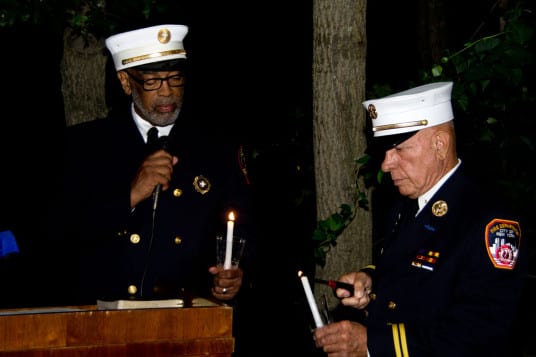One hundred years ago this week, The New York Times has reported, the worst terrorist attack on the United States until 9/11 occurred in New York Harbor. Black Tom Island, supposedly named after an early African-American resident and owned by the Lehigh Valley Railroad, lay next to Liberty Island and was the site of three-quarters of the American-made ammunitions readied for shipment to Allied forces in World War I. Stored in warehouses, in railroad cars and on barges on the small island, the munitions were targeted with small fires shortly after midnight on July 30, 1916, and the first explosion had the force of about a 5.5 earthquake on the Richter scale. It blew out windows of buildings in lower Manhattan and Jersey City, damaged the skirt and torch of the Statue of Liberty, shattered the stained glass windows in St. Patrick’s Cathedral and windows in Times Square, shook and possibly damaged the Brooklyn Bridge, threw people out of their beds and was heard as far away as Philadelphia and Maryland.
On that fateful night, some 2 million pounds of small arms and artillery ammunition were on the island, along with 100,000 pounds of TNT on Johnson Barge No. 17. Initially small fires broke out along the mile-long pier, and while some of the guards fled, fearing explosions, others attempted to fight the fires and called the Jersey City Fire Department for help. The first and largest explosion, at 2:08 a.m, produced a rain of bullets and fragments, followed by mists of ash that made fighting the fires impossible; and the smaller fires burned for hours, causing explosions throughout the night.
While hundreds were hurt, surprisingly only a few people were killed, including a policeman in Jersey City, the railroad chief of police, the barge captain and an infant thrown from its crib a mile away. Two guards were quickly arrested for having triggered the disaster by lighting smudge pots on the pier to keep away the ever-present mosquitoes until it was realized that the pots were too far from the fires to have been the cause. Further investigation, which continued for years, identified the culprits as German agents who were trying to stop the shipments.
Until early 1915, the neutral United States was able to supply any nation with arms, but after the blockade of Germany by the British Royal Navy, only the Allied forces could purchase arms. Imperial Germany sent secret agents to the U.S. to obstruct production and delivery, and some of them caused havoc and civilian panic in the ensuing years. An effective weapon was the “cigar bomb” that was silently attached to the hulls of departing American munitions ships and only exploded after the vessels were well out to sea. Many ships, with their cargo and crew, were lost that way.
President Woodrow Wilson was desperately trying to cling to neutrality before the coming, tightly contested election against Charles Evans Hughes, chief justice of the Supreme Court and former New York governor. Wilson, as the president who had kept the nation out of war, initially refused to recognize the explosions as the work of the Germans. But after the election indisputable evidence forced his hand, and by early 1917 he prepared the country for war against Germany.
After the war, the railroad sought payment for damages under the U.S.-German Peace Treaty (1921) signed in Berlin and, at last in 1953, an agreement was reached for $50 million to be paid to the railroad. Dozens of railroad cars, six piers and 13 warehouses had simply disappeared into a huge crater filled with water and debris after the first explosion. For practical purposes the island, with its causeway to the mainland, had disappeared. Final payment was not made until 1979. In today’s currency, damages are estimated at $500 million.
Landfill projects through the years time have enabled what little was left to be incorporated into Liberty State Park. A single plaque there tells the tale of the largest terrorist attack until our time.







































